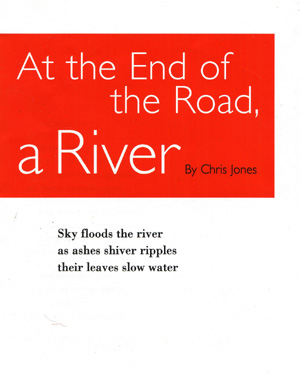

Click here to view the full project
The River Don begins in the Pennines on the gritstone moors above Penistone, and ends its seventy mile progress easing through the wide flat-lands of Humberside, joining the River Ouse at Goole. The section of the river that interests me, that I have sought to depict in this sequence, swings in through northern Sheffield, angling toward the city centre, then breaks in a north-easterly direction through what was historically the main industrial corridor toward the Tinsley Viaduct and two towers, leaving the city’s boundaries in sight of the huge retail parks centred on Meadowhall.
When I first arrived in Sheffield I didn’t see it as a river city. It took me a while to realise there were a fleet of rivers, with the Don as the foremost waterway. Later on, I came to understand the River Don was like the skeleton on which the body of the town was hung, or perhaps more viscerally, it was the gut of the city carrying everything spent and buckled that was thrown into it.
When I was digging around for information on the valley I soon realised how readily history comes down to the river. Think of Thomas Paine, Radical and pamphleteer, turning up just east of the town with plans to build a new style of iron bridge, or George Orwell commenting on the miserable health of the city in the 1930s by describing the sick river in his book The Road to Wigan Pier. Then there’s Robert Carlisle attempting to drag the girder from the canal at the beginning of The Full Monty; water is used here to show a city lost to dereliction.
Think of Sheffield’s dark histories: the dam flood of biblical proportions in 1864, the bombs built in the city that were subsequently banned or achieved world records for being the heaviest ever made; think of the super-gun, or that (now fading) connection with Union Carbide.
But some of the journeys I came across were from darkness into light. Jarvis Cocker in his song Wickerman contemplates a ride on a boat through the subterranean channels of the city surfacing in a place surrounded by grass and trees, with buds that “explode at the slightest touch”. And now the city’s post-industrial (whatever that means) and is no-longer treating its rivers like sewers, the Don is on the rise. Stretches beside the water are being developed, gentrified. Conservationists discuss species influx, and hold out the dream that one day otters may encroach on the city’s boundaries again.
For me the excitement of it was seeing kingfishers whirr from bank to bank.
Credits and Thanks
Chris would like to thank Arts Council England, Yorkshire for a Grants for the Arts Award, which made this project possible. Thanks also to Signposts for their support, and to the Friday night group, Brian Lewis, Robert Hamberger, and Mark Goodwin for their helpful comments on the text. Thanks to Ben Wilson for taking the photographs floods and purling associated with the haiku projection onto the River.